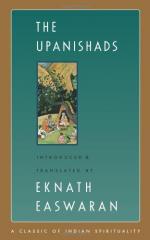|
This section contains 7,423 words (approx. 25 pages at 300 words per page) |

|
SOURCE: Brereton, Joel. “The Upanishads.” In Approaches to the Asian Classics, edited by Wm. Theodore de Bary and Irene Bloom, pp. 115-35. New York: Columbia University Press, 1990.
In the following essay, Brereton presents the five paradigms embodied in the teachings of the Upanishads, stating that these principles are used to construct wholeness out of the multiplicity of the world.
The Upanishads are early texts of the Hindu tradition which set forth the foundations of the world and the true nature of the self. They are formally quite diverse, for they include narratives, dialogues, verses, and the teachings of ancient sages. The principal Upanishads, which were composed probably between 600 and 300 b.c.e., constitute the concluding portion of the Veda, the most ancient and conventionally the most fundamental scripture of Hinduism. According to most reckonings, there are fourteen Vedic Upanishads, and these can be assigned a relative chronology on...
|
This section contains 7,423 words (approx. 25 pages at 300 words per page) |

|


